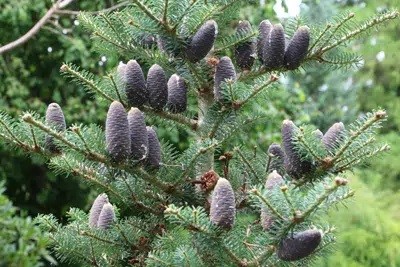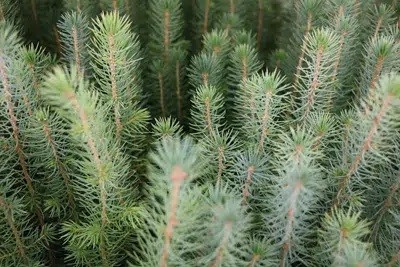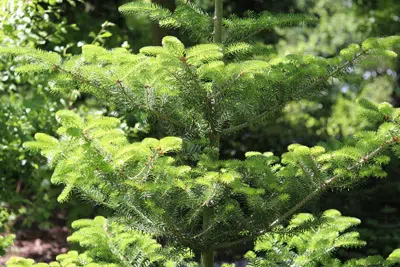We breathe the scent of fresh needles, collect cones and marvel at the graceful growth of different conifers in the forests. Sometimes, however, we don’t even know what kind of tree it actually is. Spruce and fir look confusingly similar, but those who know what details to look out for can still distinguish the species Picea and Abies. This guide reveals the difference between spruce and fir.
From a distance, there is a great risk of confusion of spruce and fir. Therefore, interested parties should take a closer look at the individual parts of the plant. The following characteristics serve to identify Picea and Abies:
Contents
Growth habit and size
Firs grow up to 70 meters high, while spruces remain well below this size. However, the difference can only be seen when both trees are standing directly next to each other. It is therefore better for the observer to orientate himself on the habitus. Firs have a rounded crown, while spruces have a pointed crown.
In addition, the fir tree appears to have grown much more densely because its branches are arranged in a whorled manner. The situation is different when the focus is only on individual branches. The branches of the spruce appear bushier.
Pinecones

Fir
- stand upright on the branches
- compact arrangement
Spruce
- hang down from the branches
- long and narrow
- open at warm temperatures
Needles

Fir
- blunt shape
- have two white stripes on the underside
- soft feel
- arranged in two rows
Spruce
- pointed
- even get stuck in the skin if the person applies too much pressure
- when tearing off, a brown flag remains attached
- clearly more needles on the branches
- therefore, with the exception of very young shoots, the branches hang down under the load
- are arranged around the branch
Informative comparison
If you have a fir branch and a spruce branch each, but are undecided as to which of the two belongs to the genus Picea and the genus Abies respectively, lay them side by side on a flat surface. Since the needles of the fir grow only on the left and right sides of the branch, it lies flat. The spruce branch, on the other hand, is somewhat elevated, which the needles grow all around and therefore also protrude above and below.
Attention, danger of confusion
While fir and spruce needles can be distinguished from each other quite well, many people confuse the former with the foliage of yew. Especially because this coniferous tree is poisonous, caution is required here. However, those who are well versed in the subject can identify the fir in a direct comparison by its more regular arrangement of needles.
Trunk
In this country, the common spruce (Picea abies) as well as the white fir (abies alba) are widespread. Especially these two species of the pine family have a distinctive bark, which makes the difference between the two trees clear.
Fir
- smooth structure
- cracked only with age
- gray to whitish color
- increasingly darker with age
- often small resin bubbles visible
Spruce
- scaly bark
- in higher altitudes reddish brown color
- in lower layers reddish brown color
- predominantly gray when old
- rough structure due to flaking
Non-visual differences
Although the roots are not visible to the observer, they can be used to distinguish between the two tree species. In contrast to fir, spruce trees are flat-rooted. Therefore, they are not as stable during storms and are much more likely to be uprooted.
Wood and processing
It is not only during a walk in the forest that many people want to know which coniferous tree it is. The distinction between spruce and fir can also be of interest in the furniture store. Since the processed wood is no longer subject to the influence of the weather, the different characteristics are much more apparent here.
Fir
- Strikingly bright
- difference between heartwood and sapwood is hardly visible
- few resin channels inside
- resin segregation only on the surface
- low dead weight
- optimal as construction timber
- often used for the production of instruments
Spruce
- many resin channels
- in untreated form sticky
- shiny when freshly planed (fades with time)
- under the influence of UV radiation the color changes from bright yellow or white to bright red
- often used as ceiling or interior wall covering, for furniture, boxes or pallets, or for pulp production


